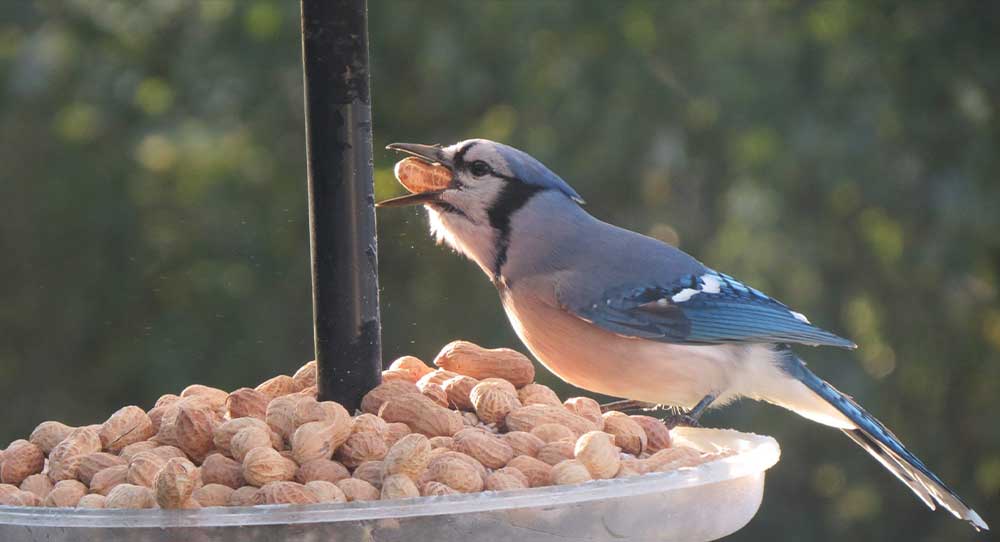
Feathered Friends
One of the most popular and widely recognized backyard birds is the Blue jay. This bird is not only colourful in appearance but also in character. A highly entertaining creature that visits birdfeeders in every season and can be heard throughout the neighbourhood as they announce their presence. Blue jays are easily attracted to backyards with the right foods and feeders and you will be greatly rewarded with their antics. After several years of their population being affected by the West Nile Virus, they seem to have made a great comeback and have been the star attraction in many backyards.
The Blue jays range is vast throughout North America as they breed in both deciduous and coniferous forests. They are most easily identified by their bright blue plumage accented with a black collar around their neck and a white chest. Both the male and female are identical in appearance. Breeding season is from mid-April – late July and nests are built in almost any tree but evergreens are their preference. The nest is perfectly constructed with an array of materials like twigs, bark, moss, cloth, paper, and mud. Three to six eggs are laid and hatch in 16-18 days and the young fledge the nest between 17-21 days later. The family stays together as the young are taught to forage for food until early fall when the parents force them to disperse.
Blue jays are very vocal and have several calls. They have a loud scream-like call to a calm almost warble like sound. They are also renowned for mimicking the sounds of other birds like hawks in particular. Other vocalizations usually go with a particular situation such as one that indicates agitation and another that brings neighbourhood blue jays together to chase away hawks and other predators from the area.
To attract blue jays to birdfeeders there are a few key factors to consider. One is the size of jays. They are much larger than most feeder birds so an appropriate feeder is important. A Platform Feeder is ideal as it is an open style feeder and is easy to land on. There are many versions of this style and some even have roofs to help keep snow off in winter. Blue jays like a variety of foods like striped and black oil sunflower, cracked corn, and their absolute favourite is peanuts. Unsalted peanuts in the shell is the ultimate attraction for jays and these can be offered on the platform feeder or there are actual feeders to dispense the nuts. A peanut feeder will also attract woodpeckers, nuthatches, and chickadees as they cling to the feeder to chip away at the shell to unveil a nutty treat. This allows for great viewing pleasure as all the birds spend time at the feeder while they work at the peanuts. Other blue jay favourites include dried corn on the cob and seed blocks which are compressed cakes of nuts, seeds and fruits. There are feeders available to offer all of these foods and most will attract more than just blue jays. Blue jays are sometimes interpreted as being aggressive at feeders as most birds scatter when they arrive. As with all creatures in nature there is a hierarchy and blue jays are high up in the backyard bird world. They will not keep other birds from your feeding stations but rather aid in attracting with their calls. They also have a reputation for raiding nests of eggs or chicks but studies show this accounts for a mere 1 per cent of their diet.

